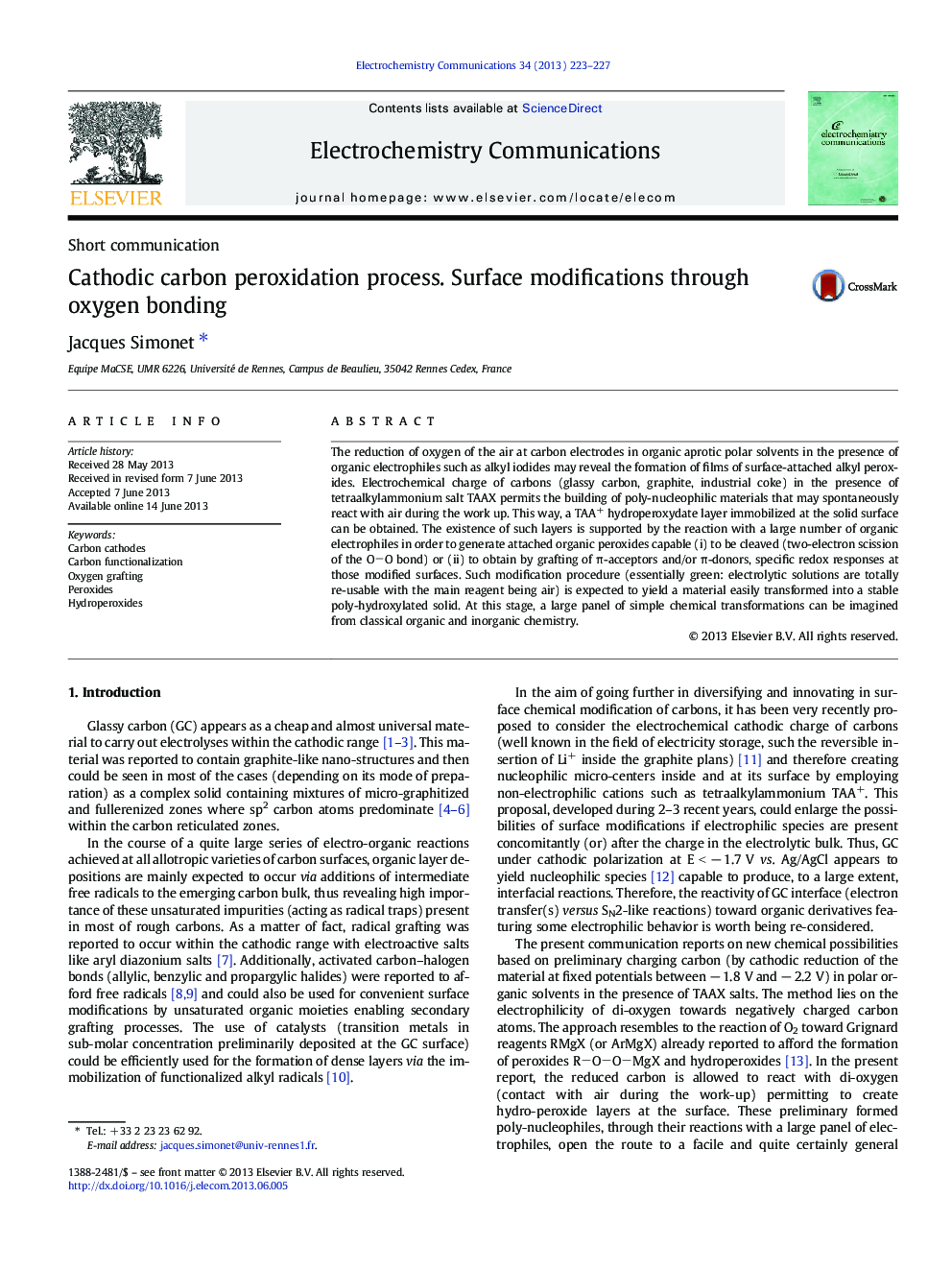| Article ID | Journal | Published Year | Pages | File Type |
|---|---|---|---|---|
| 6601554 | Electrochemistry Communications | 2013 | 5 Pages |
Abstract
The reduction of oxygen of the air at carbon electrodes in organic aprotic polar solvents in the presence of organic electrophiles such as alkyl iodides may reveal the formation of films of surface-attached alkyl peroxides. Electrochemical charge of carbons (glassy carbon, graphite, industrial coke) in the presence of tetraalkylammonium salt TAAX permits the building of poly-nucleophilic materials that may spontaneously react with air during the work up. This way, a TAA+ hydroperoxydate layer immobilized at the solid surface can be obtained. The existence of such layers is supported by the reaction with a large number of organic electrophiles in order to generate attached organic peroxides capable (i) to be cleaved (two-electron scission of the OO bond) or (ii) to obtain by grafting of Ï-acceptors and/or Ï-donors, specific redox responses at those modified surfaces. Such modification procedure (essentially green: electrolytic solutions are totally re-usable with the main reagent being air) is expected to yield a material easily transformed into a stable poly-hydroxylated solid. At this stage, a large panel of simple chemical transformations can be imagined from classical organic and inorganic chemistry.
Related Topics
Physical Sciences and Engineering
Chemical Engineering
Chemical Engineering (General)
Authors
Jacques Simonet,
